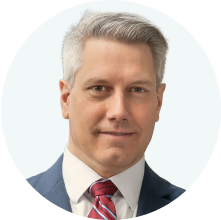About SLC Management
SLC Management is the brand name for the institutional asset management business of Sun Life Financial Inc. (“Sun Life”) under which Sun Life Capital Management (U.S.) LLC in the United States, and Sun Life Capital Management (Canada) Inc. in Canada operate.
Sun Life Capital Management (Canada) Inc. is a Canadian registered portfolio manager, investment fund manager, exempt market dealer and in Ontario, a commodity trading manager. Sun Life Capital Management (U.S.) LLC is registered with the U.S. Securities and Exchange Commission as an investment adviser and is also a Commodity Trading Advisor and Commodity Pool Operator registered with the Commodity Futures Trading Commission under the Commodity Exchange Act and Members of the National Futures Association.
BentallGreenOak, InfraRed Capital Partners (InfraRed) and Crescent Capital Group (Crescent), and Advisors Asset Management are also part of SLC Management.
BentallGreenOak is a global real estate investment management advisor and a provider of real estate services. In the U.S., real estate mandates are offered by BentallGreenOak (U.S.) Limited Partnership, who is registered with the SEC as an investment adviser, or Sun Life Institutional Distributors (U.S.) LLC, an SEC registered broker-dealer and a member of the Financial Industry Regulatory Authority (“FINRA”) . In Canada, real estate mandates are offered by BentallGreenOak (Canada) Limited Partnership, BGO Capital (Canada) Inc. or Sun Life Capital Management (Canada) Inc. BGO Capital (Canada) Inc. is a Canadian registered portfolio manager and exempt market dealer and is registered as an investment fund manager in British Columbia, Ontario and Quebec.
InfraRed Capital Partners is an international investment manager focused on infrastructure. Operating worldwide, InfraRed manages equity capital in multiple private and listed funds, primarily for institutional investors across the globe. InfraRed Capital Partners Ltd. is authorized and regulated in the UK by the Financial Conduct Authority.
Crescent Capital Group is a global alternative credit investment asset manager registered with the U.S. Securities and Exchange Commission as an investment adviser. Crescent provides private credit financing (including senior, unitranche and junior debt) to middle-market companies in the U.S. and Europe, and invests in high-yield bonds and broadly syndicated loans.
Securities will only be offered and sold in compliance with applicable securities laws.
AAM is an independent U.S. retail distribution firm that provides a range of solutions and products to financial advisors at wirehouses, registered investment advisors and independent broker-dealers.
Website content
The content of this website is intended for institutional investors only. It is not for retail use or distribution to individual investors. All investments involve risk including the possible loss of capital. All asset classes have associated risks. Certain asset classes are speculative, can include a high degree of risk and are suitable only for long-term investment. Further information available upon request. This website is for informational and educational purposes only. Past performance is not a guarantee of future results.
The information contained in this website is not intended to provide specific financial, tax, investment, insurance, legal or accounting advice and should not be relied upon and does not constitute a specific offer to buy and/or sell securities, insurance or investment services. Investors should consult with their professional advisors before acting upon any information contained on this website. The assets under management (AUM) represent the combined AUM of Sun Life Capital Management (Canada) Inc., Sun Life Capital Management (U.S) LLC, BentallGreenOak, Crescent Capital Group, InfraRed Capital Partners, and Advisors Asset Management.
AUM as of March 31, 2025. Total firm AUM includes approximately $11B in cash, other, unfunded commitments, and Advisors Asset Management equity. Total firm AUM excludes $16 billion in assets under administration by AAM.
Currency conversion rate: USD $1.00 CAD $1.4387 as of March 31, 2025.
UK Tax Strategy - InfraRed (UK) Holdco 2020 Limited
InfraRed (UK) Holdco 2020 Ltd is the UK holding company of InfraRed Partners LLP and a subsidiary of Sun Life (U.S.) Holdco 2020 Inc, which has its headquarters in the U.S. The company was incorporated to purchase InfraRed Partners LLP and acts solely as a passive holding company. The Tax Strategy for the InfraRed Holdco Group sets out our approach to the management of InfraRed Holdco Group UK tax affairs in supporting business activities in the UK.
This UK tax strategy is published in accordance with the requirements set out in Schedule 19 of Finance Act 2016. The strategy, which has been approved by the Board of Directors of InfraRed (UK) Holdco 2020 Ltd, is effective for the period ending 31 December 2024. It applies to InfraRed (UK) Holdco 2020 Ltd and its dormant subsidiary Sun Life (UK) Designated Member Ltd, referred to as the “InfraRed Holdco Group”. InfraRed Holdco Group.





